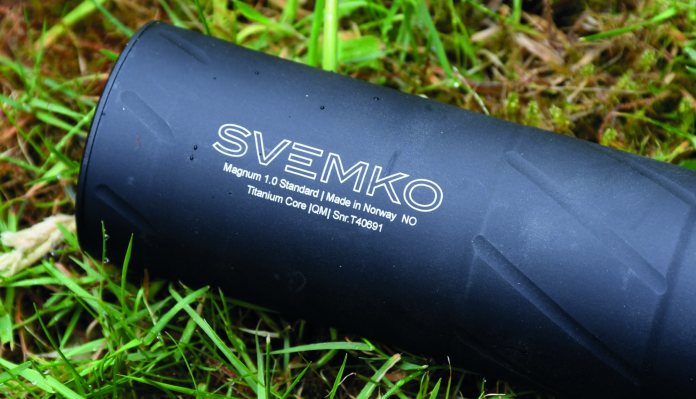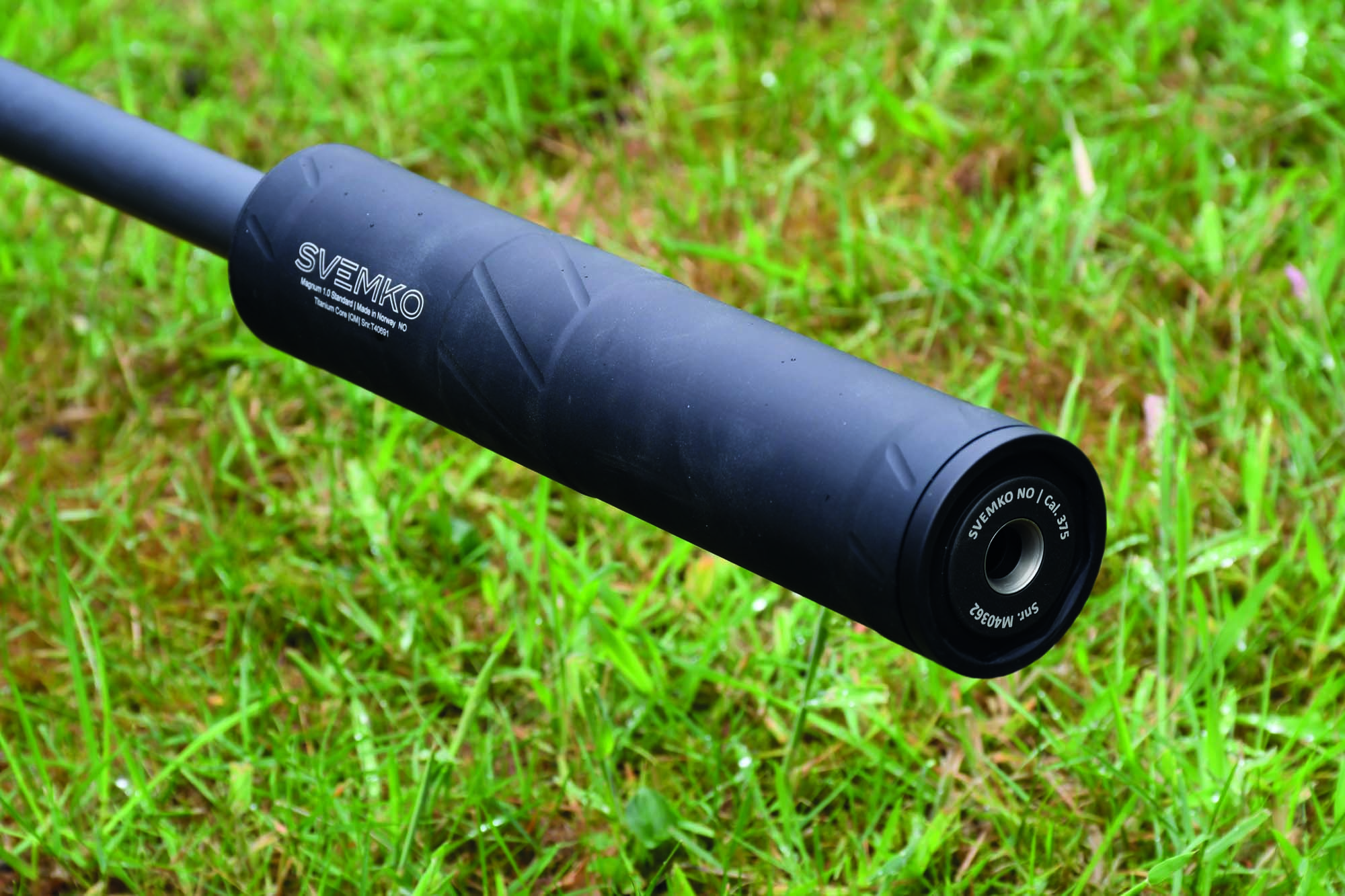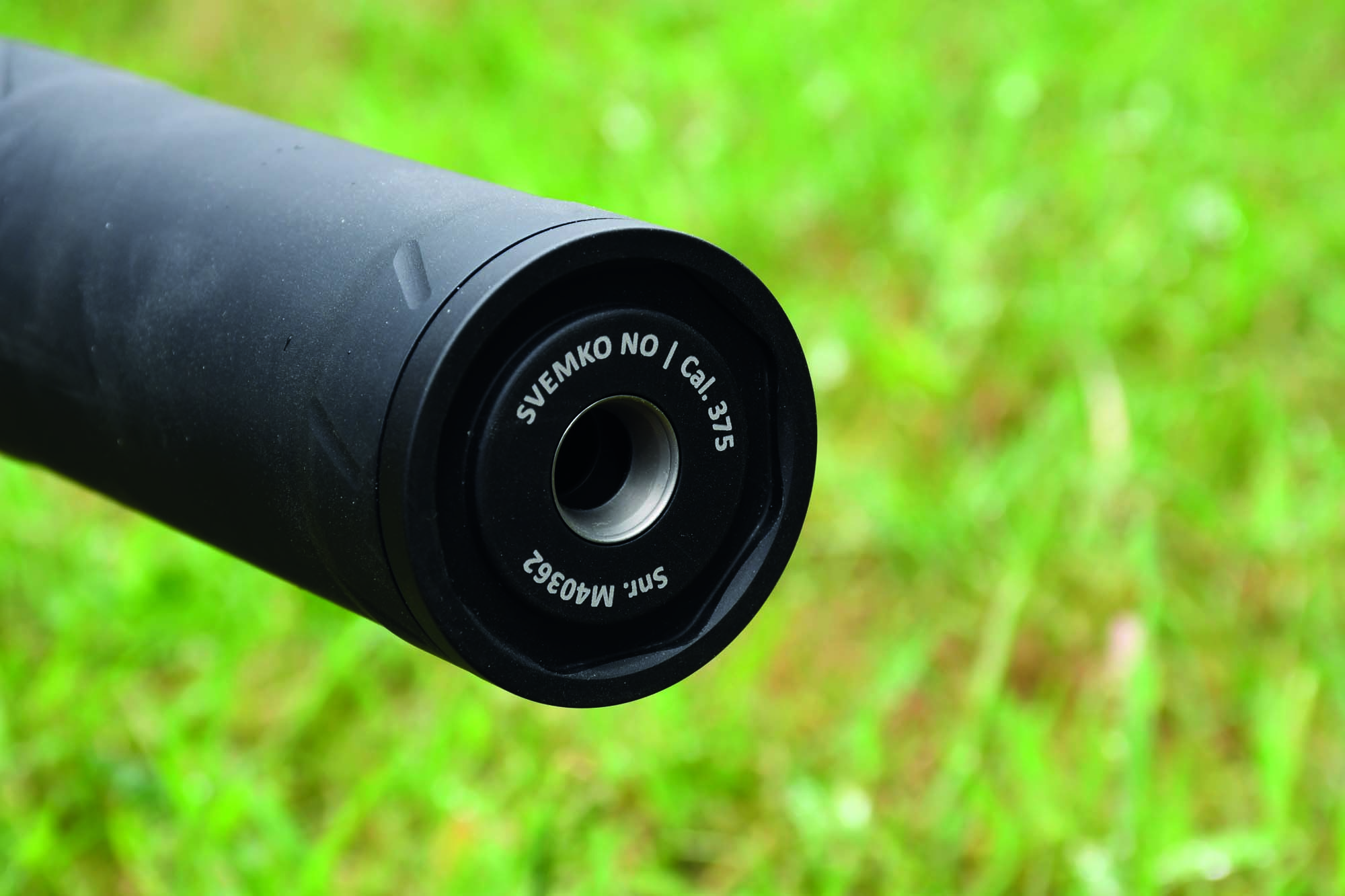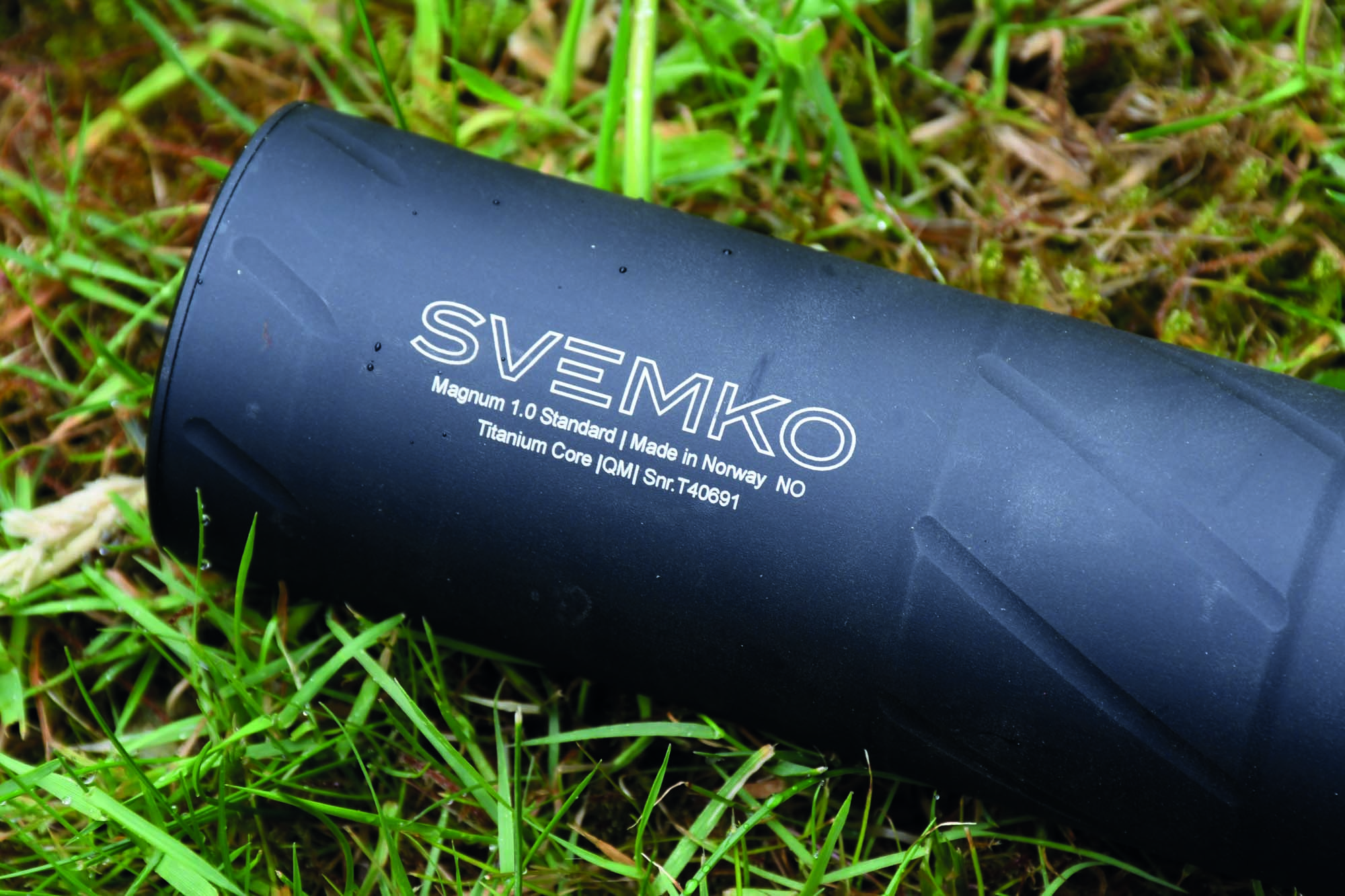Svemko Magnum 1.0 Standard Moderator Review: High-Tech Suppression
- By Chris Parkin
- Last updated: 13/08/2025

Svemko is a relatively new name on the UK scene when it comes to moderators, but it quickly caught my attention with a broad range of over-barrel and end-of-barrel products. The Norwegian company uses some of the latest alloys to minimise weight while retaining excellent corrosion resistance, and also incorporates a beneficial feature that is rarely seen in the civilian market.

The Svemko Magnum 1.0 model I have on review was supplied specifically for use with a rifle chambered in .300 PRC, a cartridge that delivers around 4,000ft/lbs of muzzle energy.
Svemko uses Grade 5 titanium (6Al-4V) for the internal baffles, a material valued for its strength and, more importantly, its resistance to corrosion in the harsh, high-temperature gas environment generated by high-energy cartridges. The alloy’s aluminium and vanadium content enhances titanium’s inherent benefits, making it ideally suited to this demanding application. This material is used in the core, the primary blast baffle, and the primary blast chamber, where strength and corrosion resistance are especially important. The anchoring threads and crown are titanium too, which is a vital detail, as corrosion often first appears there, especially when a moderator becomes stuck on a barrel.
The outer shell is made from 6082-T6 aluminium, a premium alloy increasingly used in place of 6061 due to its higher tensile strength and significant corrosion resistance. The shell is anodised in matte black and looks every bit as tough as it performs. It also acts as the main pressure vessel and the final resistor against the aggressive gas blast, making the material choice critical.

Svemko advertises parabolic internal geometry to ease gas flow and evenly distribute the blast. The standout feature is that it is not threaded like a conventional moderator. The company supplies muzzle adaptors in various threads to suit your rifle(s). These allow the same moderator to be used across multiple rifles (within size/energy constraints) via a quarter-turn bayonet-style fitting, for one-second on/off attachment.
The overall length is 230mm, and the weight is 336g, which is light for any moderator, especially one rated for magnum cartridges. The outer diameter is 49mm, and subtle helical grooves on the exterior add grip and offer a visual reference to the bayonet locking system.
In terms of performance, this moderator is impressive. The .300 PRC test rifle had a 26” barrel to maximise powder burn, yet it was remarkable how much more civilised the rifle felt to shoot. The recoil felt more like an elongated push than a sharp kick, and the noise signature was no louder than a .308 with a typical short barrel and a mid-tier reflex moderator.

Although Svemko moderators are relatively expensive, their internal design and use of premium materials more than justify the cost. Considering the low weight and compact size, the Magnum 1.0 is hard to overlook. Though this is a short-term review and long-term corrosion resistance is hard to assess, the test unit was not brand new and still showed no signs of wear or damage, which is promising for future performance. Finally, the aluminium outer shell seemed to shed heat relatively quickly to minimise thermal haze in the sightline. When considering the price, do bear in mind the multi-rifle capability and possible cost savings!

To achieve such noise and recoil suppression is genuinely impressive, and Svemko is now firmly on my shortlist.
Reviewer: Chris Parkin